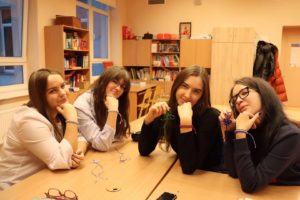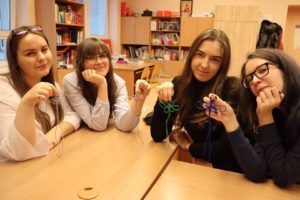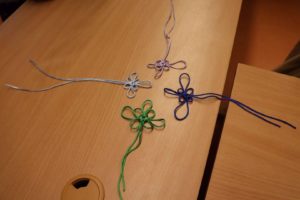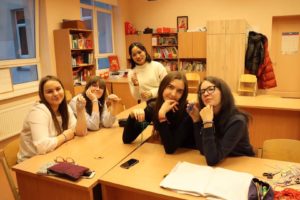Chinese Cultural Week was successfully hosted by Confucius Classroom of Riga Culture Secondary School
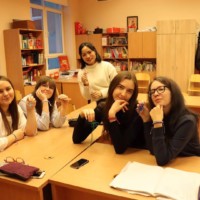
2018年12月13日至2018年12月19日,里加文化中学孔子课堂开展了为期一周的文化周活动。此次文化周活动中,每天都有不同的文化主题。
(一)文化周活动之中国结
2018年12月13日,里加文化中学孔子课堂开展了介绍中国结文化活动。在课上,汉语教师向学生们介绍了中国结的含义并教学生自己制作中国结,学生们对此都很感兴趣。除此之外,汉语教师还教了学生们编织平结手链,学生们选择了自己喜欢的颜色的编织线跟老师学起来,编完之后直接戴在了手上,并且表示非常喜欢!
介绍中国结活动先用讲解的方式介绍中国结的文化,再教学生们自己亲手制作,让她们在亲身体验中学习,加深了她们对中国结的印象,也受到了学生们的喜爱。
(二)文化周活动之剪纸
2018年12月14日,里加文化中学孔子课堂开展了剪纸文化活动。剪纸是义项传统的中国艺术。学生们在没有学习之前就已经对剪纸艺术有过了解。此次活动,汉语老师先重点介绍了中国剪纸艺术的各个形式和用处,接着教授学生们剪经典的“囍”字剪纸和四折花形剪纸。学生们惊叹于剪纸艺术的巧妙,除了剪出经典的“囍”字,学生们还充分发挥自己的想象力和创造力,自己进行了创作,制作出精美的剪纸作品。学生完成作品后,汉语教师把学生的作品贴在了教室墙上,充满红色剪纸的教室里显得喜气洋洋。师生在愉快的氛围中结束了剪纸艺术文化课。
(三)文化周活动之筷子
2018年12月17日,里加文化中学孔子课堂开展了筷子文化活动。筷子是中国人每天必定用到的物品,筷子文化对于学生了解中国文化也是必不可少的一部分。课上,汉语教师先向学生们介绍了筷子的功能,还说明了中国的筷子与亚洲其他国家如韩国、日本的筷子对比,突出了中国筷子的特点。此外,汉语教师还跟学生重点介绍了筷子使用的礼仪,如筷子不能直直地插在碗里,饭桌上不能用筷子指人等。在学习这些礼仪时,学生们也对中国传统文化有了更深的理解。学习完礼仪,老师准备好了筷子让学生们练习使用筷子。通过用筷子夹棋子、夹红枣的方法,学生们基本都能正确地使用筷子。练习之后,学生们还进行了一场筷子夹红枣比赛,学生们在比赛中都很积极,夹红枣夹得不亦乐乎,在一篇欢声笑语中,筷子文化课接近了尾声。
(四)文化周活动之吹墨梅花和中国书法
2018年12月18日,里加文化中学孔子课堂开展了吹墨梅花与书法体验活动。在体验课上,学生们自己动手吹梅花、写书法,为自己的作品感到骄傲。书法课上,学生们从不会握毛笔到能够用毛笔顺利地写出一个汉字,都有着很大的学习热情。汉语中一向被视为比较难的汉字部分学生们也能够用心去学,此次书法课的开展对于汉语教学有着积极的作用。
(五)文化周活动之茶艺
2018年12月19日,里加文化中学孔子课堂开展了茶文化活动。课上,汉语老师先介绍了茶的起源和汉字“茶”的意思,接着介绍了中国六大茶类。之后现场表演茶艺,用的是乌龙茶。经过一系列详细的解说和示范,向学生介绍
了表演茶艺所用工具和泡茶的各个步骤,泡茶之后请学生一一品尝。看完茶艺表演并品尝乌龙茶过后,学生们表达了对茶艺的喜爱,学生们看完老师的表演之后,在老师的指导下还自己完成了完整的茶艺表演。泡完茶之后他们说茶艺能够让人平静,是一件修身养性的事情,他们从中也体会到了茶道精神。茶艺课在大家泡茶品茶中结束了,大家都对中国的茶艺文化有了基础的了解。
至此,里加文化中学孔子课堂文化周活动圆满落下帷幕。学生们在文化周里接触了各种各样的中国传统文化,并表现出对这些文化的兴趣,这是非常有利于汉语的语言教学和文化教学的。希望接下来可以给学生带来更多更精彩的文化活动,让学生们更加全面地了解中国传统文化,从而提高他们对汉语的兴趣和学习汉语的热情,帮助他们更好地学习汉语,学习中国文化。
From December 13, 2018 to December 19, 2018, the Confucius Classroom at Riga Cultural Secondary School launched a week-long Chinese Cultural Week. In this cultural week, there are different cultural themes every day.
(1) Chinese knots of Cultural Week activities
On December 13, 2018, the Confucius Classroom at Riga Culture Secondary School launched a Chinese cultural event whose theme is about Chinese knot. In the class, the Chinese teacher introduced the meaning of the Chinese knot to the students and taught the students to make their own Chinese knots. The students were very interested in this. In addition, the Chinese teachers also taught the students to weave the flat bracelets. The students chose the braided strings of their favorite colors to learn with the teacher. After finishing the knit working, they were directly worn their own bracelets on the wrists and expressed their love to it!
In this activity, the teacher introduced the Chinese knot culture at first, and then teach the students to make their own works, letting them learn in the hands-on experience, deepened their impression of the Chinese knot. In this way,the Chinese knot is loved by the students.
(2) Paper-cutting of Cultural Week activities
On December 14, 2018, the Confucius Classroom at Riga Culture Secondary School launched a paper-cutting culture activity. Paper-cutting is a traditional Chinese art. The students have already had an understanding of the art of paper-cutting before they have studied. During the activity, the Chinese teacher first introduced the various forms and uses of Chinese paper-cutting art, and then taught the students to cut the classic “囍” word-cut and four-fold flower paper-cutting. The students were amazed at the ingenuity of the art of paper-cutting. In addition to cutting out the classic “囍” characters, the students also made full use of their imagination and creativity, and they made their own creations and produced beautiful paper-cutting works. After the students finished their work, the Chinese teacher puts the student’s work on the classroom’s wall, and the classroom was filled with red paper-cuts. It looks so happy in the classroom. The teachers and students ended the paper-cutting art culture class in a pleasant atmosphere.
(3) Chopsticks in the Cultural Week
On December 17, 2018, the Confucius Classroom at Riga Culture Secondary School launched a chopsticks cultural activity. Chopsticks are items that Chinese people must use every day. Chopsticks culture is also an indispensable part of students’ understanding of Chinese culture. In the class, the Chinese teacher first introduced the function of the chopsticks to the students. She also contrasted the Chinese chopsticks with the chopsticks of other Asian countries such as South Korea and Japan, highlighting the characteristics of Chinese chopsticks. In addition, the Chinese teacher also introduced the etiquette used by chopsticks with the students. For example, chopsticks cannot be inserted directly into the bowl, and it cannot be used to refer to people while in a meal. When learning these etiquettes, the students also had a deeper understanding of Chinese traditional culture. After finishing the etiquette part, the teacher prepared the chopsticks for the students to practice using them. By using the chopsticks to hold the red dates, the students can basically use the chopsticks correctly. After the practice, the students also performed a match of chopsticks and red dates. The students were very active and happy in the competition. In a laughter, the chopsticks culture class came to an end.
(4) Blowing Plum Blossoms and Chinese Calligraphy in the Cultural Week
On December 18, 2018, the Confucius Classroom at Riga Culture Secondary School conducted an activity of blowing plum blossoms and calligraphy. In the experiencing lesson, the students blew the plum blossoms and wrote calligraphy by themselves. And they were proud of their own work. In the calligraphy lesson, students learned a lot. At first, they even don’t know how to hold the brush,but after the lesson, they are able to write a Chinese character smoothly with a brush.They all have great learning enthusiasm about this. Chinese characters, who have always been regarded as difficult in Chinese, now are also able to learn with. This calligraphy lesson has a positive effect on Chinese language teaching.
(5) Tea ceremony of the Cultural Week
On December 19, 2018, the Confucius Classroom at Riga Culture Middle School launched a tea culture event. In the class, the Chinese teacher first introduced the origin of the tea and the meaning of the Chinese character “tea”, and then introduced the six major teas in China. In the live performance of tea art, oolong tea was used. Through a series of detailed explanations and demonstrations, the tools used to perform the tea art and the steps of making tea are introduced. After the tea is brewed, the students tasted one by one. After watching the tea performance and tasting the oolong tea, the students expressed their love for the tea art. They also finished the complete tea performance under the guidance of the teacher. After the completion of the tea performance, they said that the tea art can make people calm, and it is a self-cultivation thing. They also realized the spirit of the tea ceremony. The tea art lesson ended in making tea and drinking tea. And everyone has a basic understanding of the Chinese tea culture after this lesson.
At this point, the Confucius Classroom Cultural Week in Riga Culture Secondary School came to a successful conclusion. During the Chinese Cultural Week, the students were exposed to a variety of traditional Chinese cultures and showed interest in these cultures. This is a very good thing to language teaching and cultural teaching for Chinese. I hope that next time, we can bring more and more exciting cultural activities to students, so that students can understand Chinese traditional culture more comprehensively. Thus enhancing their interest in Chinese and their enthusiasm for learning Chinese, helping them to learn Chinese and Chinese culture better.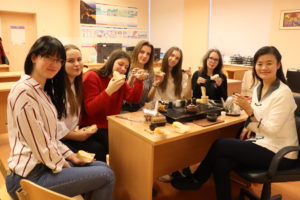
-300x200.jpg)
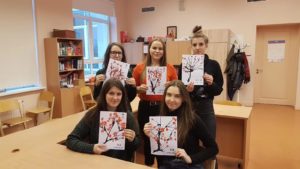
-300x200.jpg)
-300x200.jpg)
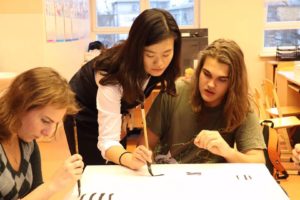
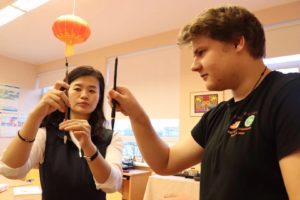
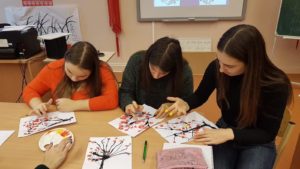
-300x225.jpg)
-300x225.jpg)
-300x169.jpg)
-300x225.jpg)
-300x225.jpg)
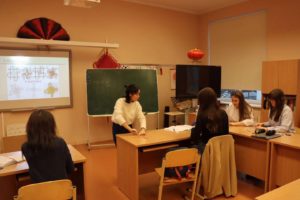
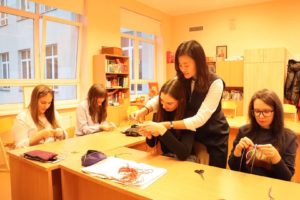
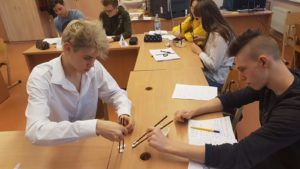
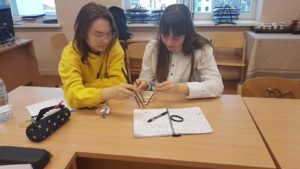
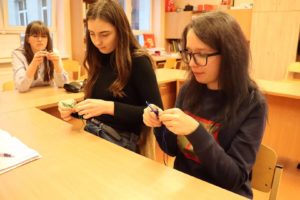
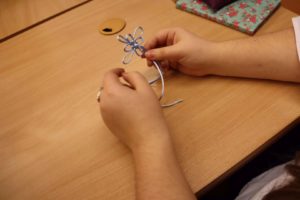
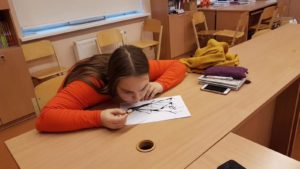
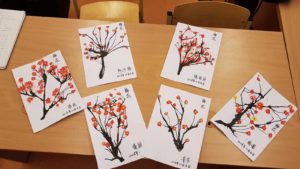
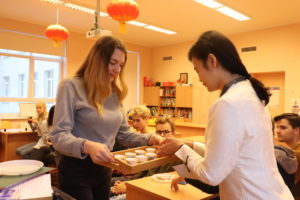
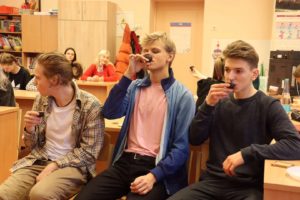
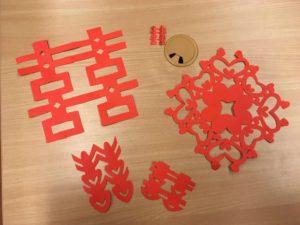
-300x200.jpg)
-300x200.jpg)
-300x169.jpg)
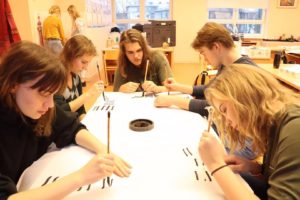
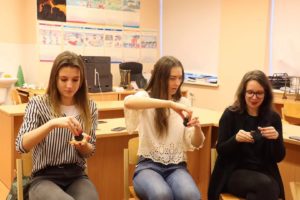
-300x225.jpg)
-225x300.jpg)
-300x225.jpg)
-225x300.jpg)
